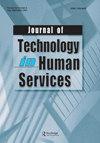变化的现实,变化的方法:数字化研究方法
IF 1.5
Q2 SOCIAL WORK
引用次数: 0
摘要
很难相信互联网成立于大约60年前。随着互联网的出现,出现了新的词汇:大数据、社交网络、数据烟雾、数据追踪、数据协作、远程医疗、远程心理健康、云计算和无数其他新想法。随着这些新数据源的兴起,无生命物体变得更智能,我们诞生了:智能城市、智能汽车、智能手机、智能手表和智能家居;在不久的将来,肯定会有其他新的更智能的物体。科技行业也在推进虚拟和增强现实,从培训员工到游戏,以及人工智能的新发展。这个新的生态系统需要扩展和发展现有的理论和方法,并创造新的方法来探索这些新工具对个人、组织和社区的影响。现在嵌入日常生活的互联网、社交网络和智能手机都会生成数据,提供新的数据源,并提供新的收集、分析和解释数据的方法。为了理解这些新现象,正在开发一系列相应的研究方法,e-research是一个通用术语,用来描述研究方法的创新,这些创新是为了利用这个新的、功能强大得多的数字生态系统而出现的。这些下一代分布式数字技术的关键特征是开发可互操作、可扩展的计算工具,使研究人员能够在互联网上无缝定位、访问、共享、聚合、操作和可视化数字数据,其规模之大前所未有。2020年第一期第39卷(1)共有四篇文章探讨了电子研究或数字研究方法,以增强和扩大我们对如何在这些新系统内最大限度地发挥我们的研究潜力的集体理解。在本期中,我们的特色是:本文章由计算机程序翻译,如有差异,请以英文原文为准。
Changing realities, changing methods: digital research methods
It is hard to believe that the internet was founded roughly sixty years ago. With the advent of the internet came new vocabulary: big data, social networks, data smog, data traces, data collaboratives, telehealth, tele mental health, cloud computing and countless other new ideas. Simultaneously with the rise of these new data sources inanimate objects became smarter, we’ve birthed: smart cities, smart cars, smart phones, smart watches, and smart homes; with surely other new smarter objects in the near future. The technology sector has is also moving forward with virtual and augmented reality for everything from training employees to gaming as well as new developments in artificial intelligence. This new ecosystem requires expanding and developing existing theories and methods as well as creating new methods for exploring the impacts of these new tools on individuals, organizations and communities. The internet, social networks and smart phones, now embedded in day to day life both generate data, providing new data sources as well as offering new methods of data collection, analysis and interpretation. A commensurate collection of research methods is developing in order to make sense of these new phenomenon, e-Research is a generic term, coined to describe innovations in research methods that are emerging to take advantage of this new and vastly more powerful digital eco-system. Key features of these next generation of distributed digital technologies are the development of interoperable, scalable computational tools that make it possible for researchers to locate, access, share, aggregate, manipulate and visualize digital data seamlessly across the Internet on a scale previously unimaginable. This first issue of 2020, volume 39 (1) features four articles exploring e-Research or digital research methods for enhancing and expanding our collective understanding of how to maximize our research potentials within and allied to these new systems. In this issue we feature:
求助全文
通过发布文献求助,成功后即可免费获取论文全文。
去求助
来源期刊

JOURNAL OF TECHNOLOGY IN HUMAN SERVICES
SOCIAL WORK-
CiteScore
4.20
自引率
6.70%
发文量
6
期刊介绍:
This peer-reviewed, refereed journal explores the potentials of computer and telecommunications technologies in mental health, developmental disability, welfare, addictions, education, and other human services. The Journal of Technology in Human Services covers the full range of technological applications, including direct service techniques. It not only provides the necessary historical perspectives on the use of computers in the human service field, but it also presents articles that will improve your technology literacy and keep you abreast of state-of-the-art developments.
 求助内容:
求助内容: 应助结果提醒方式:
应助结果提醒方式:


